People
artnet asks: Artist Declan Jenkins on the Relationship Between Art and Poetry
His next exhibition opens on September 5.
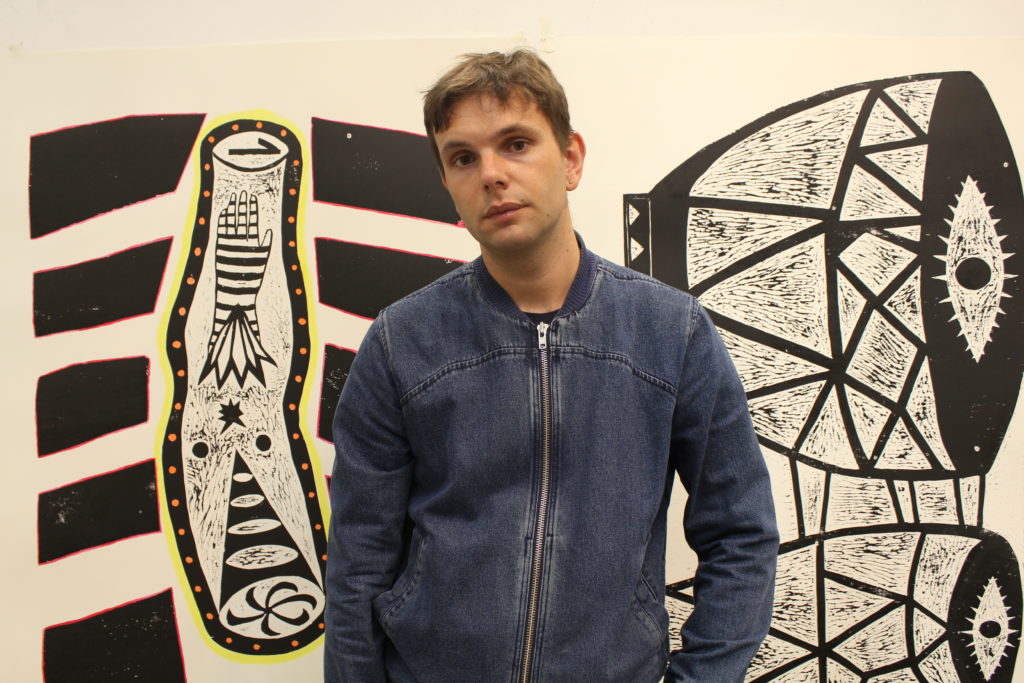
His next exhibition opens on September 5.

Artnet Galleries Team

For artist Declan Jenkins, language and artistic expression have a symbiotic relationship. The artist and poet’s work juxtaposes dramatic imagery with philosophical meditations to provoke a visceral response from his audience. In his recent work, he has used this strategy to tackle a number of complex issues through the medium printmaking, including the origins of nationalism and global structures of power.
Intrigued? You’re in luck. This September, the artist is presenting his first solo exhibition “I Sing of Armoires…” at Sims Reed Gallery in London. In an interview with artnet News, Jenkins elaborated on his process and what viewers can expect from his upcoming show.
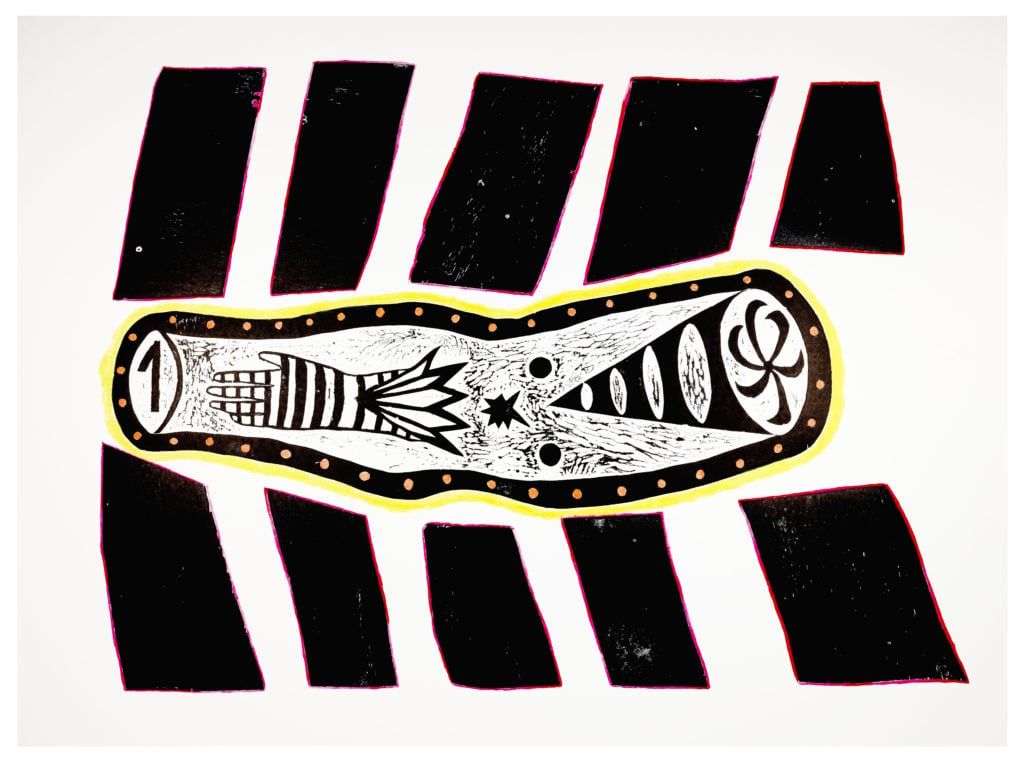
Declan Jenkins, The Arm (2017). Courtesy of Sims Reed Gallery.
Do you have a motto for yourself or your artistic process?
“Non tantum artifex” is my motto—it means more than an artist in Latin. It was coined for a performance called Jenkins Ultras which involved me talking about my work at the Royal Academy Schools whilst being chanted at by my own fantasy fan club. The supporters were modeled on football fans—they had special Jenkins shirts, scarves, banners and match programs. They sung classic football chants that were adapted to comment or critique on different aspects of my practice, one being “Non tantim artifex.” I liked the phrase so much I decided to keep it on permanently. I have thought about getting it tattooed onto my arm.
When is your next exhibition, why should we come?
My next show “I Sing of Armoires…” opens on September 5 at Sims Reed Gallery in London. I will be exhibiting a new series of woodcuts. They encompass a variety of subjects and ideas. Visually they resemble German Expressionist prints, and more recently have taken a ‘Pop turn’ with zingy explosions and fizzing zig-zags, and marks that resemble mangled punctuation.
The show’s title alludes to the first line of the Aeneid by Virgil, “I sing of arms.” The title of the show “I Sing of Armoires…” describes domestic objects and experience, and reflects the way our personal existential myths have come to replace the grand epic stories of nations embodied in long dead heroes. The title speaks too of the transition of the global system from a state of war to commerce and the enormous growth in private power.
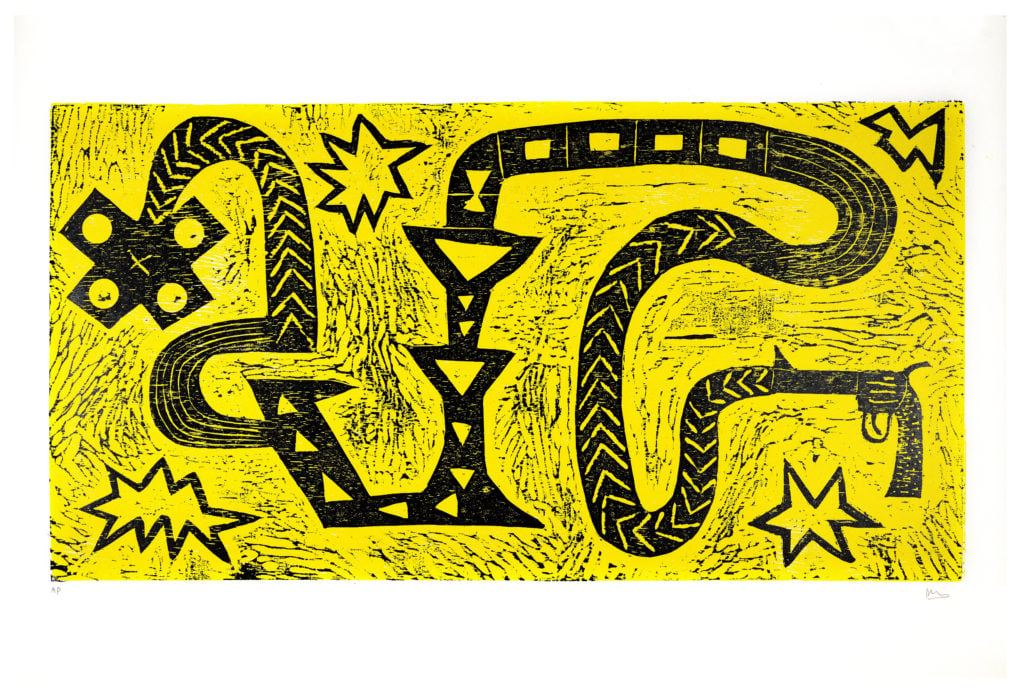
Declan Jenkins, Infinite Gun (2017). Courtesy of Sims Reed Gallery.
What are some things that inspire you?
I’m attracted to what is buried underneath the surface of things. When I was a kid I used to dig holes in the back garden. I was fascinated with what was in the ground, I loved the feel and smell of the earth. I did a degree in archaeology and what marked me was this concept of excavation as a destructive process. As well as preservation archaeology is an annihilation of ruins, a conversion of matter into knowledge. It is tied to the belied that in removing something you can reveal something else. This is how my woodcuts are made,the form emerges from negative space. Some people say that my prints are very violent, brutal even. They too involve the destruction of matter (the carved block) and its conversion into image.
Are there any media you want to explore that you haven’t yet?
I would love to try woodcarving in order to translate certain qualities of my prints into sculpture. The Expressionist Kirchner branched out into sculpture. Some of his first pieces were just tree trunks he hacked away with an ax and finished with a knife, adding a bit of painted color. They are extremely raw and echo the thrusting, angular brushstrokes in his painting. This is what I want to try and do. I am especially interested in carving as this is something I already practice in two dimensions. It is always exciting to learn how similar concerns can be explored in a different medium.
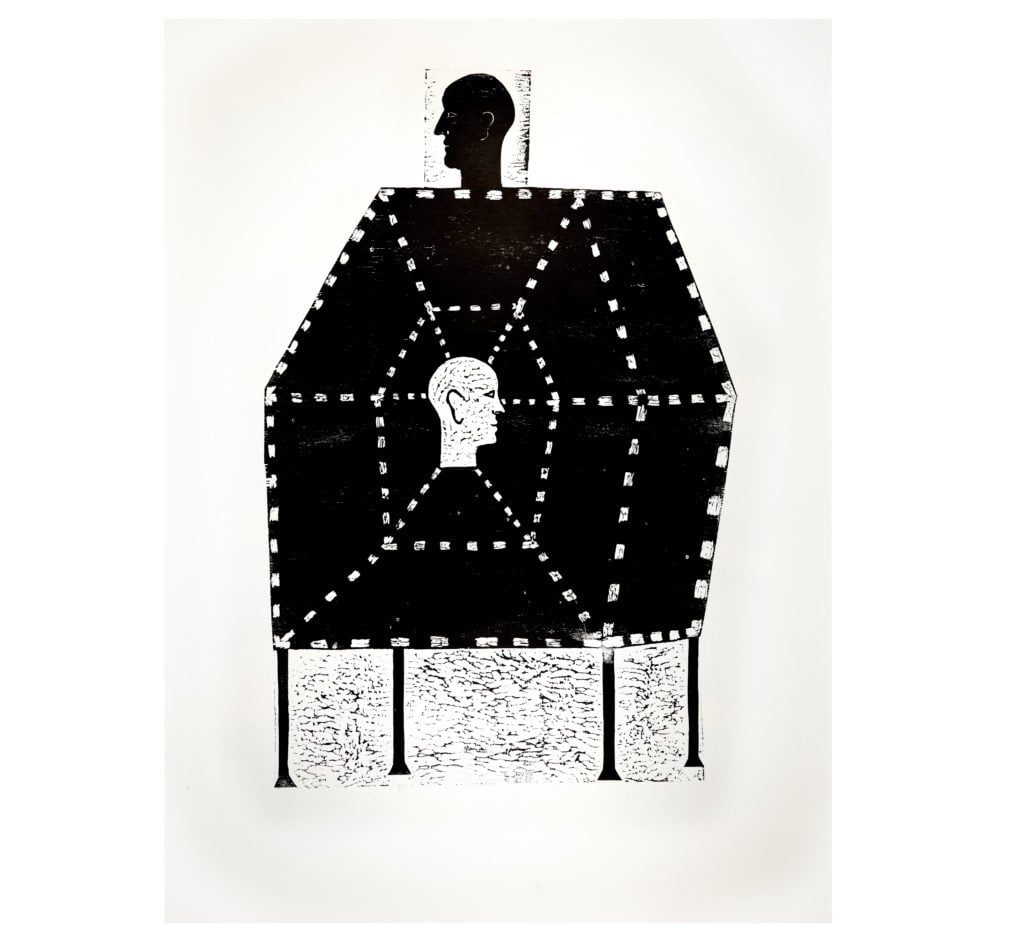
Declan Jenkins, Man and Matrix (2017). Courtesy of Sims Reed Gallery.
If you weren’t an artist, what do you think you would be doing?
Carl Jung had a dream of this multistory-house. As he descended the stairs of the house, each level presented itself an earlier epoch. He traveled through the era of Rococo, followed by the medieval and the Roman periods, until finally he reached a cave with prehistoric remains. He interprets this as a representation of the psyche and the stages in the development of consciousness.
I like this metaphor of the house. As I mentioned I studied archaeology and ancient history, so I might have continued down that route. I used to write poetry so I may have gone into writing. When I was a child I was utterly obsessed with dinosaurs so I could have become a paleontologist. I see these interests as different layers of my identity. They support each other structurally, like the different levels of Jung’s house. I think my art is based on all of these earlier interests. They are all activities that have stretched or expanded my consciousness. But the sequence is only one possible way I might have developed. I could have been a poet whose earlier passion for art provided some sort of a basis for his writing.
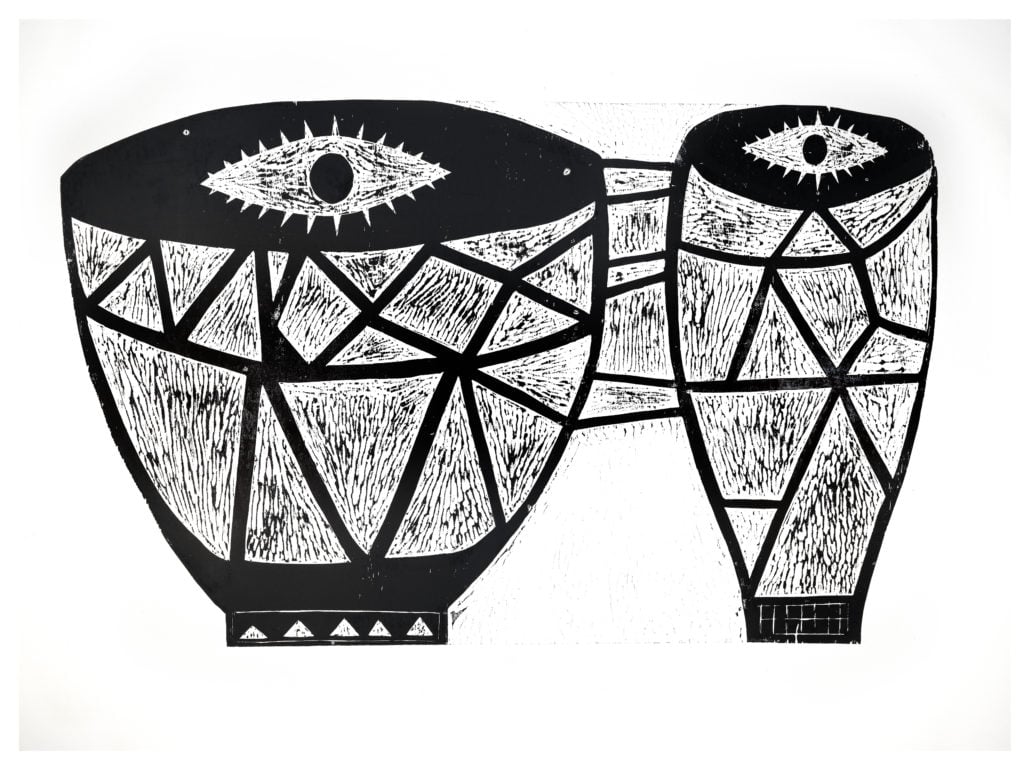
Declan Jenkins, Ego Drums (2017. Courtesy of Sims Reed Gallery.
Describe your creative process. What kinds of patterns, routines, or rituals do you have?
Before I begin making a print, there is a whole gestation period in which the idea or form I would like to realize emerges out of many possible permutations I think of. The process of drawing allows me to visualize these different permutations.I may go through a whole cycle of sketches before arriving at something that I would like to turn into a woodcut. This system of drawings and diagrams allows me to consider potential works in relation to one another—to compare their different merits and rethink or even combine them.
Language and more particularly text plays a big role too. My walls are covered with words and phrases that I have written down. They are often circular in meaning and symmetrical in structure. Dumb koans that I stick up to meditate on. The meaning of a sentence can take many months or even years to digest. Some of the phrases on my wall are:
“THE STUDIO DISINTEGRATES THE WORLD INTO MATERIALS AND REINTEGRATES MATERIALS INTO A WORLD
IDENTITY AS PHYSICAL WALL
DISCOVERY OF FORM IN THE BODY AND BODY IN THE FORM”
The artnet Gallery Network is a community of the world’s leading galleries offering artworks by today’s most collected artists. Learn more about becoming a member here, or explore our member galleries here.